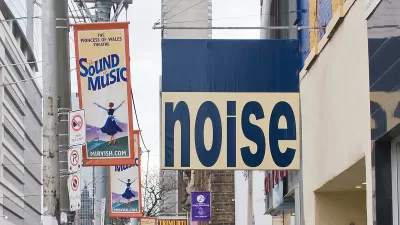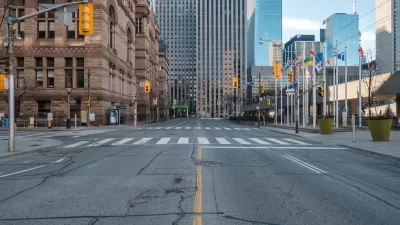A detailed description of how noise impacts health and wellbeing.

A New York Times article by Emily Baumgaertner, Jason Kao, Eleanor Lutz, Josephine Sedgwick, Rumsey Taylor, Noah Throop and Josh Williams highlights the dangers of noise pollution such as traffic and airplane sounds to public health.
We’ve all been told to limit the volume on our headphones to protect our hearing. But it is the relentless din of daily life in some places that can have lasting effects throughout the body.
As the authors explain, this isn’t exclusively a problem in big, noisy cities. “Even people who live in relatively peaceful rural and suburban communities can be at risk. The sudden blare of trains that run periodically through D’Lo, Miss. (population: less than 400), can be especially jarring to the body because there is little ambient noise to drown out the jolt.”
The article details the effects noise can have on the human body and mind. “The endocrine system can overreact, causing too much cortisol, adrenaline and other chemicals to course through the body,” for example. Noise can contribute to higher blood pressure, inflammation in arteries, and other risk factors for heart disease.
As the science around noise pollution becomes more clear, cities can take steps to reduce harmful noise. The practice was established at the federal level in 1972 with the Noise Control Act issued by the Environmental Protection Agency (EPA), an office that was later defunded under the Reagan administration.
Meanwhile, “The European Union requires member nations to monitor and assess sound levels across regions and to produce new action plans every five years to address communities at greatest risk.” Some countries have installed noise-detecting cameras, quiet hours, and other mitigation measures.
FULL STORY: Noise could take years off your life. Here’s how.

Alabama: Trump Terminates Settlements for Black Communities Harmed By Raw Sewage
Trump deemed the landmark civil rights agreement “illegal DEI and environmental justice policy.”

Study: Maui’s Plan to Convert Vacation Rentals to Long-Term Housing Could Cause Nearly $1 Billion Economic Loss
The plan would reduce visitor accommodation by 25% resulting in 1,900 jobs lost.

Why Should We Subsidize Public Transportation?
Many public transit agencies face financial stress due to rising costs, declining fare revenue, and declining subsidies. Transit advocates must provide a strong business case for increasing public transit funding.

Wind Energy on the Rise Despite Federal Policy Reversal
The Trump administration is revoking federal support for renewable energy, but demand for new projects continues unabated.

Passengers Flock to Caltrain After Electrification
The new electric trains are running faster and more reliably, leading to strong ridership growth on the Bay Area rail system.

Texas Churches Rally Behind ‘Yes in God’s Back Yard’ Legislation
Religious leaders want the state to reduce zoning regulations to streamline leasing church-owned land to housing developers.
Urban Design for Planners 1: Software Tools
This six-course series explores essential urban design concepts using open source software and equips planners with the tools they need to participate fully in the urban design process.
Planning for Universal Design
Learn the tools for implementing Universal Design in planning regulations.
Caltrans
Smith Gee Studio
Institute for Housing and Urban Development Studies (IHS)
City of Grandview
Harvard GSD Executive Education
Toledo-Lucas County Plan Commissions
Salt Lake City
NYU Wagner Graduate School of Public Service





























